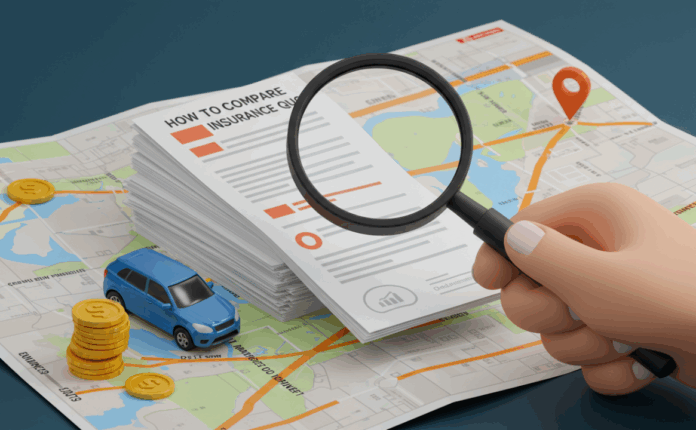Insurance often feels like a necessary evil—something you pay for hoping you’ll never need it. But in reality, it’s a financial safety net that can prevent small mishaps from turning into life-altering disasters. Whether it’s covering medical bills after an accident or rebuilding your home after a storm, the right insurance can safeguard your hard-earned money and give you room to breathe during tough times. In this article, we’ll break down the essentials, tackle common questions, and arm you with actionable steps to make smarter choices.
What Is Insurance and Why Does It Matter?
At its core, insurance is a contract between you and an insurer. You pay regular premiums (like monthly installments), and in return, they promise to cover specific losses or damages up to a set limit. Think of it as pooling risks with others: when one person faces a covered event, the group’s contributions help foot the bill.
The Fundamentals of How It Works
Insurance operates on three pillars: premiums, coverage, and claims. Premiums are your ongoing cost, influenced by factors like your age, location, and risk profile (e.g., a sports car driver pays more for auto coverage). Coverage defines what’s protected—say, liability for injuries you cause or comprehensive for theft. Claims are how you access benefits: document the incident, notify your insurer, and submit proof for reimbursement.
Why bother? Without it, a single event like a car crash could wipe out your savings. In the U.S., for instance, the average auto accident costs over $15,000, and medical emergencies can exceed $100,000. Insurance spreads that burden, letting you focus on recovery instead of ruin.
Key Types of Insurance for Everyday Life
Not all insurance is created equal. Here’s a rundown of the must-haves, with tips on what to prioritize based on your stage of life.
Health Insurance: Protecting Your Well-Being
Health coverage pays for doctor visits, hospital stays, prescriptions, and preventive care. It’s crucial because U.S. healthcare costs are skyrocketing—averaging $12,000 per person annually.
Actionable Tip: If you’re employed, start with employer-sponsored plans, which often subsidize premiums. For self-employed folks, explore marketplaces like Healthcare.gov during open enrollment (November 1–January 15). Aim for plans with low out-of-pocket maximums if you have chronic conditions, and always check network providers to avoid surprise bills.

Auto Insurance: Safeguarding Your Wheels
Required by law in most states, auto insurance covers accidents, theft, and liability. Minimums vary—e.g., California mandates $15,000 bodily injury per person—but experts recommend 100/300/100 coverage ($100K per person/$300K per accident for injuries, $100K for property damage).
Actionable Tip: Bundle with home insurance for 10–25% discounts. To lower rates, maintain a clean driving record, install anti-theft devices, or opt for a higher deductible if you have an emergency fund. Use apps like those from Progressive or Geico to simulate scenarios and compare.
Homeowners or Renters Insurance: Securing Your Space
Homeowners policies protect against perils like fire, theft, or storms, while renters focus on personal belongings (landlords insure the structure). Expect to pay $1,200–$2,000 yearly for $250K dwelling coverage.
Actionable Tip: Inventory your possessions with photos or a spreadsheet—list items, values, and serial numbers. Increase coverage for high-value items like jewelry via riders. In flood-prone areas, add separate flood insurance through FEMA, as standard policies exclude it.
Life Insurance: Planning for the Unthinkable
This pays a death benefit to beneficiaries, ideal for parents or those with dependents. Term life (20–30 years) is affordable for young families; whole life builds cash value but costs more.
Actionable Tip: Calculate needs using the DIME method (Debts + Income for years to retirement + Mortgage + Education). A $500K policy might cost $20/month for a healthy 30-year-old. Shop via independent brokers to avoid biases, and review annually as life changes.
How to Shop for and Buy Insurance Wisely
Choosing insurance isn’t one-size-fits-all. Here’s how to avoid overpaying or underprotecting.
Step 1: Assess Your Risks and Needs
List potential threats: Do you drive a lot? Own a pet? Have kids? Use online calculators from sites like NerdWallet (but verify independently) to estimate coverage gaps. Factor in inflation—bump limits 3–5% yearly.
Step 2: Hunt for Quotes Without the Hassle
Contact at least three insurers. Independent agents can multi-quote, saving time. Online tools from Allstate or State Farm let you input details for instant estimates. Watch for red flags like exclusions for pre-existing conditions.
Step 3: Decode Premiums, Deductibles, and Exclusions
Premiums rise with more coverage; deductibles (your upfront cost per claim) lower them—$1,000 might save $300/year but hurts if you claim often. Read the fine print for exclusions (e.g., wear-and-tear isn’t covered). Negotiate: Mention competitor quotes to haggle discounts.
Mastering the Claims Process: What to Do When Disaster Strikes
Claims can be stressful, but preparation smooths the path. Insurers aim to pay valid claims promptly—most auto ones settle in 30 days.
Filing a Claim: A Step-by-Step Guide
- Report Immediately: Call your agent within 24–48 hours; delays can void coverage.
- Document Everything: Photos, police reports, witness statements—build a digital folder.
- Get Estimates: For repairs, shop multiple shops; submit to insurer for approval.
- Follow Up: Track via app or portal; appeal denials with evidence.
Pro Tips for Success
Keep records organized in a dedicated app like Evernote. If disputed, escalate to your state’s insurance department. And remember: Honesty pays—fudging details risks policy cancellation.
Busting Common Insurance Myths
- Myth: “I’m young and healthy—I don’t need it.” Reality: Accidents happen; a $5K ER visit adds up fast.
- Myth: “More coverage always costs more.” Reality: Deductible tweaks can slash premiums without skimping protection.
- Myth: “Claims raise rates forever.” Reality: Not-at-fault incidents often don’t; shop around post-claim.
FAQ: Your Insurance Questions Answered
What happens if I miss a premium payment?
Most policies offer a 30-day grace period. Pay up to reinstate; otherwise, coverage lapses, leaving you exposed. Set autopay to avoid this.
How often should I review my policies?
Annually, or after major events like marriage, home purchase, or a move. Life evolves—your insurance should too.
Can I cancel my policy anytime?
Yes, but prorate refunds apply mid-term. Notify in writing and shop new coverage first to prevent gaps.
Is umbrella insurance worth it?
For high-net-worth folks or litigious areas, yes—it adds $1M+ liability for ~$200/year. Great for extra peace.
How does climate change affect insurance?
Rising disasters mean higher premiums in vulnerable spots. Mitigate with home upgrades (e.g., storm shutters) for discounts up to 20%.
Insurance isn’t exciting, but it’s empowering. By understanding the basics and taking proactive steps, you’ll build a fortress around your finances. Start with one policy review today—what’s your first move?



